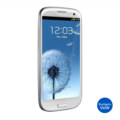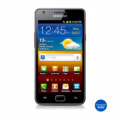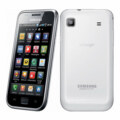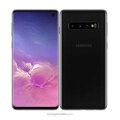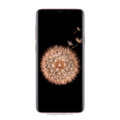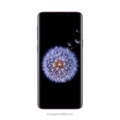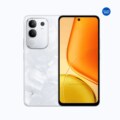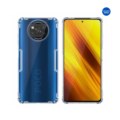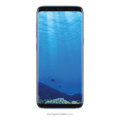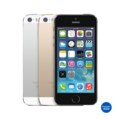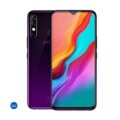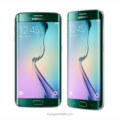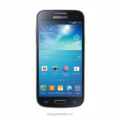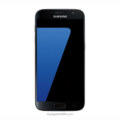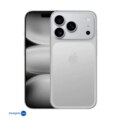Samsung Galaxy S8
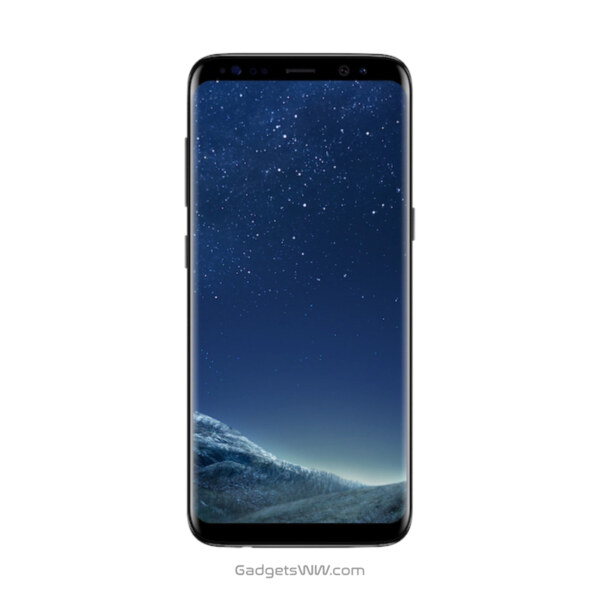

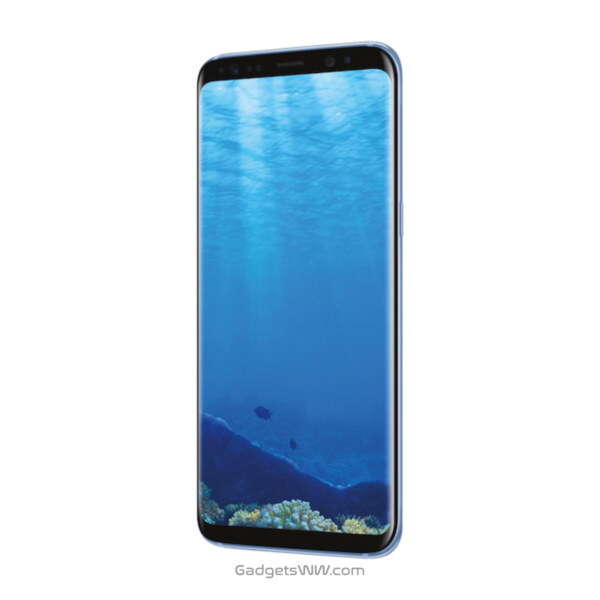
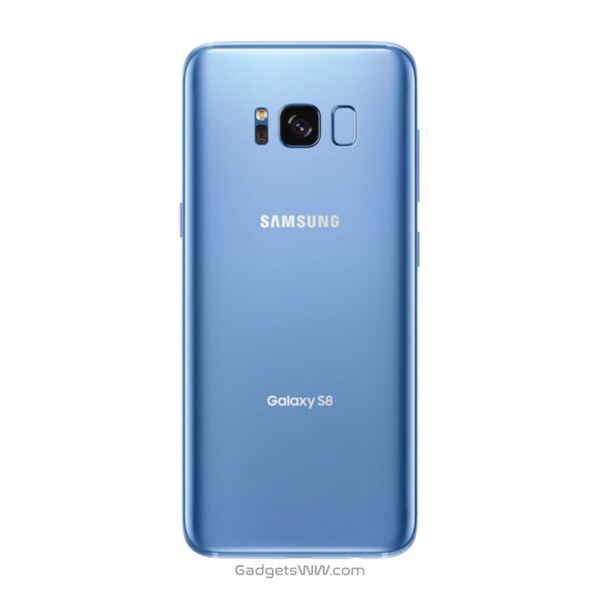
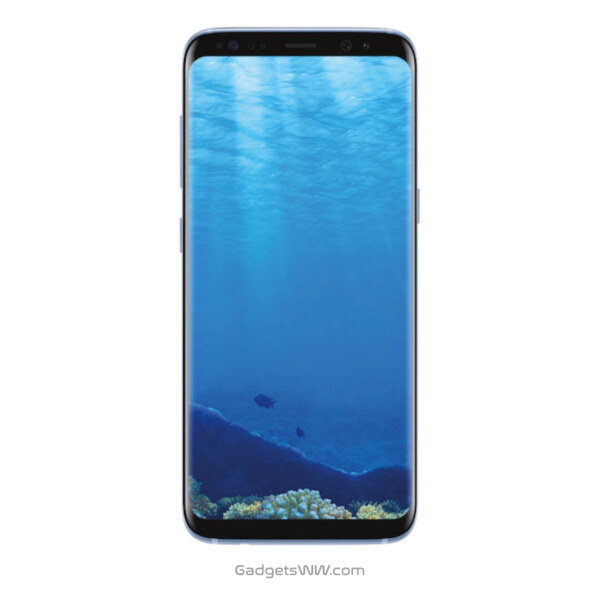
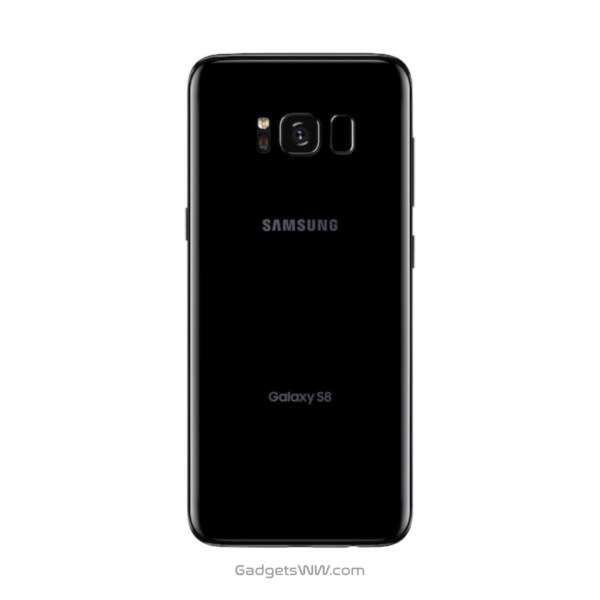

-
Display: 5.8" (1440x2960 pixels)
-
Processor: Exynos 8895 (10 nm) - EMEA | Qualcomm MSM8998 Snapdragon 835 (10 nm)
-
Rear Camera: 12MP
-
RAM: 4GB
-
Storage: 64GB
-
OS: Android 7.0, up to Android 9.0, One UI
-
Battery: 3000mAh
Samsung Galaxy S8 Review (2017): The Future in Your Hand
Introduction: A Bold Step Into the Future
In 2017, Samsung redefined what a smartphone could look like. After years of steady improvement, the Samsung Galaxy S8 arrived to signal a new era of design and innovation.
Gone were the thick bezels and home button. In their place came the Infinity Display, a near borderless screen that flowed elegantly from edge to edge. The result was a phone that appeared to be built for the future. Following the success of the Galaxy S7, expectations were sky-high. The Galaxy S8 didn’t just meet them; it set a new standard for Android smartphones.
Design and Build: The Art of Minimalism
The Samsung Galaxy S8 introduced a design language that would influence smartphones for years to come.
- Dimensions:9 × 68.1 × 8.0 mm
- Weight: 155 grams
- Build: Gorilla Glass 5 front and back, aluminium frame
- Colors: Midnight Black, Orchid Grey, Arctic Silver, Coral Blue, Maple Gold
Samsung finally eliminated the physical home button, replacing it with on-screen navigation keys and an invisible pressure-sensitive home area built into the display.
The front is dominated by a stunning tall 18.5:9 display, curved seamlessly at both edges. Even the top and bottom bezels are minimal, giving the phone a cinematic feel. The fingerprint sensor’s move to the back was controversial, but overall, the Galaxy S8 design was breathtaking. It wasn’t just beautiful; it was futuristic.
Display: The Infinity Revolution
This was the phone that introduced the world to the Infinity Display, and it remains one of the most significant leaps in Samsung’s history.
- Size:8 inches
- Type: Super AMOLED
- Resolution: 2960 × 1440 pixels (Quad HD+)
- Pixel Density: 570 ppi
- Aspect Ratio:5:9
- Protection: Corning Gorilla Glass 5
With the Galaxy S8 display, Samsung achieved something few had before: near perfection. The screen stretches almost edge to edge, creating an immersive experience whether you are watching movies, playing games, or browsing photos.
Colors are vibrant, blacks are deep, and brightness levels are exceptional. HDR support adds realism to videos, and curved edges make everything feel alive. Simply put, the Infinity Display changed how people viewed smartphone screens.
Samsung Galaxy S8 Specifications
| Feature | Specification |
| Display | 5.8-inch Quad HD+ Super AMOLED |
| Processor | Exynos 8895 Octa (Global) / Snapdragon 835 (US) |
| RAM | 4 GB |
| Storage | 64 GB + microSD (up to 256 GB) |
| Rear Camera | 12 MP Dual Pixel, f/1.7, OIS, 4K video |
| Front Camera | 8 MP, f/1.7, autofocus |
| Battery | 3000 mAh |
| OS | Android 7.0 Nougat (upgradable) |
| Features | Iris Scanner, IP68 water resistance, Always-On Display |
| Connectivity | 4G LTE, Wi-Fi 802.11ac, Bluetooth 5.0, NFC, USB-C |
Every element of the S8’s hardware felt next-generation. Samsung combined cutting-edge power with sleek design and premium build quality.
Performance: Flagship Power, Smooth Experience
The Samsung Galaxy S8 was among the first phones to use the 10nm Exynos 8895 processor (or Snapdragon 835 in select regions). This smaller, more efficient chip delivered both speed and power savings. Multitasking was effortless, apps opened instantly, and gaming performance was excellent. Combined with 4 GB of RAM and fast UFS 2.1 storage, everything felt smooth and responsive.
Samsung also introduced the Game Mode, allowing players to record gameplay, block notifications, and fine-tune performance for smoother visuals. No matter how you used it, the S8 performed like a true flagship in every way.
Camera: Refinement Over Reinvention
While Samsung didn’t completely overhaul the camera hardware, it refined an already excellent system from the Galaxy S7.
- Rear Camera: 12 MP Dual Pixel, f/1.7, OIS
- Front Camera: 8 MP, f/1.7, autofocus
- Video: 4K UHD @ 30fps
The Dual Pixel autofocus technology ensured lightning-fast focus speeds, even in challenging light. The larger aperture and pixel size helped capture sharp, colorful shots with impressive low-light clarity.
Samsung also introduced multi-frame image processing, where multiple shots are combined into one for better detail and reduced noise. The new 8 MP front camera featured autofocus for the first time, delivering sharper selfies with natural tones. In 2017, the Galaxy S8 camera was one of the best smartphone cameras in the world.
Software: Polished and Intelligent
The Galaxy S8 launched with Android 7.0 Nougat, layered with Samsung’s new Grace UX, later known as Samsung Experience. It was lighter, cleaner, and far more refined than older versions of TouchWiz.
Key Software Features
- Bixby: Samsung’s new voice assistant for tasks, reminders, and visual search.
- Edge Panels: Quick access to favorite contacts, apps, and shortcuts.
- Always-On Display: Customizable with themes, clocks, and notifications.
- Secure Folder: Store sensitive apps and files safely.
- Samsung Pay: Supports both NFC and MST payments.
Bixby wasn’t perfect at launch, but Samsung’s effort to integrate a full AI assistant was a bold step toward the future.
Security: Layers of Protection
The Samsung Galaxy S8 introduced multiple biometric security options:
- Fingerprint Scanner (rear-mounted)
- Iris Scanner for secure unlocking
- Facial Recognition (basic, but fast)
Users could also encrypt data through Samsung Knox, ensuring enterprise-grade security. This combination of features made the S8 one of the most secure smartphones of 2017.
Battery Life and Charging
With a 3000 mAh battery, the S8 offered solid all-day performance thanks to its efficient processor and AMOLED screen.
Charging options included:
- Fast Charging (15W)
- Fast Wireless Charging
Samsung had learned its lessons from the Note 7 incident, implementing strict 8-point battery safety checks to guarantee reliability. For most users, the Galaxy S8 battery easily lasted a full day of use, from morning emails to late-night browsing.
Connectivity and Extras
The Galaxy S8 marked Samsung’s full transition to USB Type-C, replacing the aging micro-USB port.
Connectivity highlights:
- 4G LTE
- Wi-Fi 802.11ac
- Bluetooth 5.0 (first on a Galaxy device)
- NFC for mobile payments
- MST for legacy payment terminals
It also retained the 3.5 mm headphone jack, a welcome feature as many brands were starting to remove it.
Audio and Multimedia
Samsung partnered with AKG to include premium-tuned earbuds in the box, a move that made audiophiles happy.
Audio output was crisp, balanced, and powerful, both through wired and wireless connections.
Combined with that curved Infinity Display, the Galaxy S8 offered one of the best multimedia experiences of its time.
Galaxy S8 vs Galaxy S7
| Feature | Galaxy S7 | Galaxy S8 |
| Display | 5.1″ QHD | 5.8″ QHD+ Infinity Display |
| Processor | Exynos 8890 | Exynos 8895 |
| RAM | 4 GB | 4 GB |
| Front Camera | 5 MP | 8 MP with autofocus |
| Battery | 3000 mAh | 3000 mAh |
| Design | Flat/Curved | Bezel-less Infinity |
| Home Button | Physical | On-screen |
| USB | micro-USB | USB-C |
The S8 represented a major leap forward in design and usability, making the S7 feel almost traditional by comparison.
Pros and Cons
Pros:
- Stunning Infinity Display
- Premium glass and metal design
- Excellent camera performance
- Fast and efficient processor
- Water and dust resistant (IP68)
- microSD expansion
- Fast and wireless charging
- Retains headphone jack
Cons:
- Fingerprint scanner position not ideal
- Bixby assistant still immature at launch
- Slippery design without a case
Conclusion: The Smartphone That Changed the Game
The Samsung Galaxy S8 was more than an upgrade; it was a revolution in smartphone design. It introduced the Infinity Display, pushed boundaries in performance, and set a new benchmark for what Android phones could be. Every curve, every detail, and every feature was built to inspire. The Galaxy S8 wasn’t just Samsung’s best phone of 2017, it was the device that shaped the next generation of smartphones.
Even years later, the S8 remains a symbol of how bold innovation and refined engineering can redefine the future. For many, it was love at first sight. For Samsung, it was the dawn of a new Galaxy.
Specs
LAUNCH
| Announced | 2017, March 29. Released 2017, April 24 |
| Availability | Discontinued |
NETWORK
| 2G Bands | GSM 850 / 900 / 1800 / 1900 - SIM 1 & SIM 2 (dual-SIM model only) |
| 3G Bands | HSDPA 850 / 900 / 1700(AWS) / 1900 / 2100 |
| 4G Bands | 1, 2, 3, 4, 5, 7, 8, 12, 13, 17, 18, 19, 20, 25, 26, 28, 32, 66, 38, 39, 40, 41 |
| Speed | HSPA 42.2/5.76 Mbps, LTE (5CA) Cat16 1024/150 Mbps |
| Technology | GSM / HSPA / LTE |
DESIGN
| Measurements | 148.9 x 68.1 x 8 mm (5.86 x 2.68 x 0.31 in) |
| Weight | 155 g (5.47 oz) |
| Build | Glass front (Gorilla Glass 5), glass back (Gorilla Glass 5), aluminum frame |
| SIM | Nano-SIM | Nano-SIM + Nano-SIM |
| Extra | IP68 dust tight and water resistant (immersible up to 1.5m for 30 min) |
DISPLAY
| Type | Super AMOLED, HDR10 |
| Size | 5.8 inches, 84.8 cm2 (~83.6% screen-to-body ratio) |
| Resolution | 1440 x 2960 pixels, 18.5:9 ratio (~570 ppi density) |
| Protection | Corning Gorilla Glass 5 | 3D Touch (home button only) |
PLATFORM
| OS | Android 7.0 (Nougat), upgradable to Android 9.0 (Pie), One UI |
| Chipset | Exynos 8895 (10 nm) - EMEA | Qualcomm MSM8998 Snapdragon 835 (10 nm) - USA & China |
| CPU | Octa-core (4x2.3 GHz Mongoose M2 & 4x1.7 GHz Cortex-A53) - EMEA | Octa-core (4x2.35 GHz Kryo & 4x1.9 GHz Kryo) - USA & China |
| GPU | Mali-G71 MP20 - EMEA | Adreno 540 - USA & China |
MEMORY
| Card Slot | microSDXC (uses shared SIM slot) - dual SIM model only |
| Internal | 64GB 4GB RAM | UFS 2.0 or UFS 2.1 |
REAR CAMERA
| Single | 12 MP, f/1.7, 26mm (wide), 1/2.55", 1.4µm, dual pixel PDAF, OIS |
| Features | LED flash, auto-HDR, panorama |
| Video | 4K@30fps, 1080p@30/60fps, 720p@240fps, HDR, stereo sound rec., gyro-EIS, OIS |
SELFIE CAMERA
| Single | 8 MP, f/1.7, 25mm (wide), 1/3.6", 1.22µm, AF; 2 MP (dedicated iris scanner camera) |
| Features | HDR |
| Video | 1440p@30fps |
SOUND
| Loudspeaker | Yes |
| 3.5mm Jack | Yes | 32-bit/384kHz audio |
COMMUNICATION
| WLAN | Wi-Fi 802.11 a/b/g/n/ac, dual-band, Wi-Fi Direct |
| Bluetooth | 5.0, A2DP, LE, aptX |
| Positioning | GPS, GLONASS, BDS, GALILEO |
| NFC | Yes |
| Radio | No |
| USB | USB Type-C 3.1 |
FEATURES
| Sensors | Iris scanner, fingerprint (rear-mounted), accelerometer, gyro, proximity, compass, barometer, heart rate, SpO2 |
| . | Samsung DeX (desktop experience support) ANT+ | Bixby natural language commands and dictation Samsung Pay (Visa, MasterCard certified) |
BATTERY
| Kind | Li-Ion 3000 mAh, non-removable (11.55 Wh) |
| Charging | 15W wired, QC2 | Wireless (Qi) (market dependent) |
| Talktime | Up to 20 h (3G) |
| Music Time | Up to 67 h |
OTHERS
| Colors | Midnight Black, Orchid Gray, Arctic Silver, Coral Blue, Maple Gold, Rose Pink, Burgundy Red |
| Models | SM-G950FD, SM-G950W, SM-G950S, SM-G950K, SM-G950L, SM-G9500, SM-G950A, SM-G950P, SM-G950T, SM-G950U, SM-G950V, SM-G950F, SM-G950U1, SM-G950N, SC-02J, SCV36, SM-G950, G950F |
| SAR | 0.44 W/kg (head) 0.75 W/kg (body) |
| SAR EU | 0.32 W/kg (head) 1.27 W/kg (body) |
PRICE
| UK | £200 |
| USA | $260 |
EU LABEL
Reviews
Disclaimer Note
The reviews, opinions, and information shared on this blog are based on personal experiences, research, and available product details at the time of writing. While we strive to provide accurate and up-to-date information, we cannot guarantee that all specifications, prices, or features remain current.

